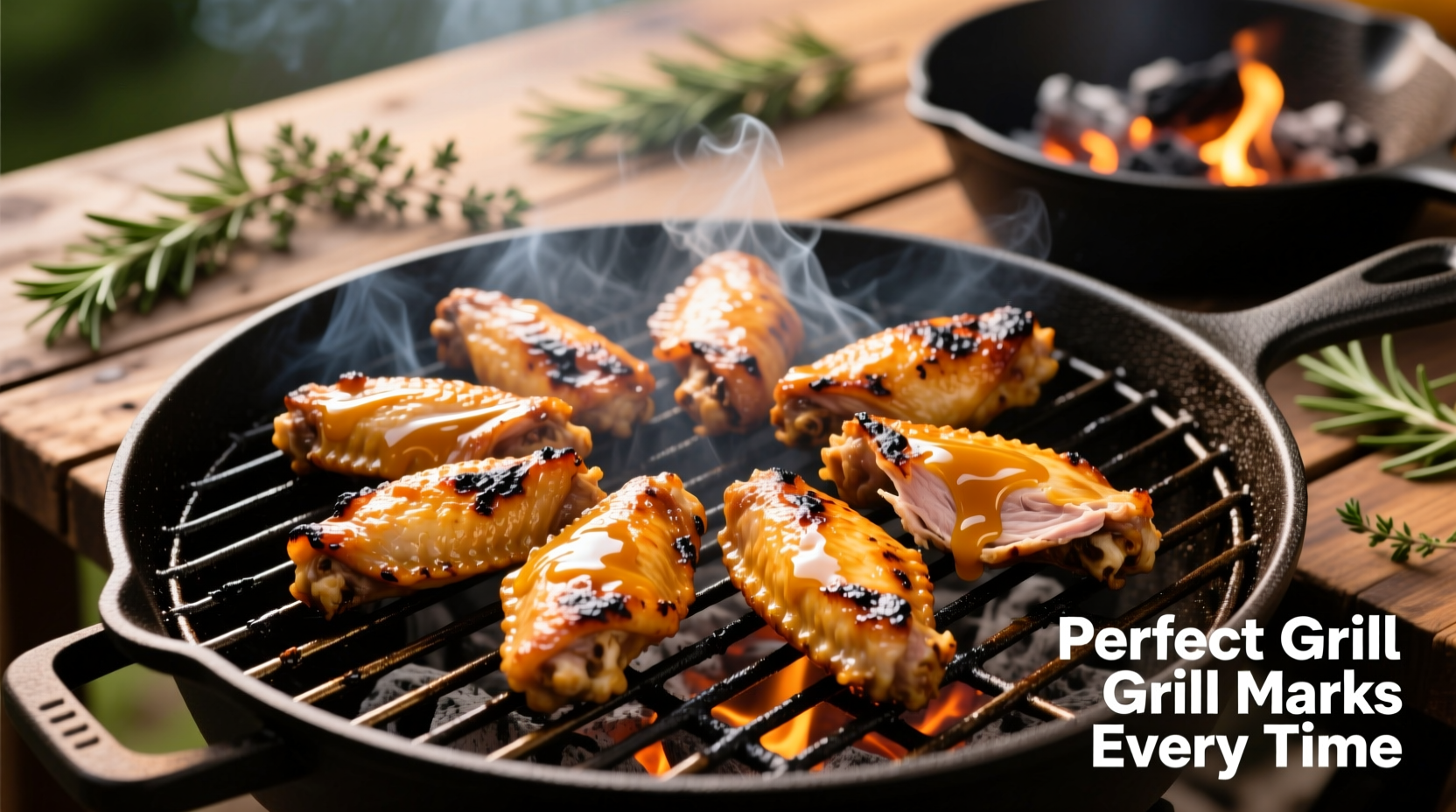Nothing beats the smoky flavor and crispy texture of perfectly grilled chicken wings. Whether you're preparing for game day or a summer barbecue, mastering the art of grilled wings separates casual cooks from true backyard pitmasters. This comprehensive guide reveals the exact techniques professionals use to achieve restaurant-quality results at home.
Why Grilled Wings Outperform Other Cooking Methods
While oven-baked wings have their place, grilling delivers unique advantages that elevate this classic appetizer. The direct radiant heat of the grill creates superior caramelization on the skin, while the open flame imparts a subtle smokiness that can't be replicated indoors. According to the American Grill Association, grilled wings develop complex flavor compounds through the Maillard reaction at optimal temperatures between 375-400°F—a sweet spot difficult to achieve in conventional ovens.

Essential Equipment Checklist
| Equipment Type | Recommended Options | Why It Matters |
|---|---|---|
| Grill Type | Two-zone setup (charcoal or gas) | Creates controlled cooking environment with direct and indirect heat areas |
| Thermometer | Dual-probe instant-read thermometer | Ensures accurate internal temperature (165°F) while monitoring grill heat |
| Prep Tools | Sharp kitchen shears, paper towels, mixing bowls | Proper wing preparation is critical for even cooking and crispiness |
Pre-Grill Preparation: The Secret to Crispy Skin
Dry wings before seasoning—moisture is the enemy of crispiness. Pat wings thoroughly with paper towels, then place them on a wire rack in the refrigerator for 4-12 hours. This air-drying process dehydrates the skin surface, creating optimal conditions for browning. For enhanced results, toss wings with 1 teaspoon baking powder per pound (sodium-free) 30 minutes before grilling—this alkaline compound raises the skin's pH level, accelerating the Maillard reaction according to research from the Culinary Institute of America.
Mastering the Two-Zone Grilling Technique
Set up your grill with direct heat on one side (400°F) and indirect heat on the other (300°F). Start wings skin-side down over direct heat for 3-4 minutes to render fat and create grill marks, then move to indirect heat. Close the lid and cook for 15-20 minutes, turning occasionally, until internal temperature reaches 165°F. This USDA Food Safety and Inspection Service standard ensures safe consumption while maintaining juiciness (source).
Managing Flare-Ups: Critical Safety Tip
When fat drips onto flames, move wings to the indirect zone immediately. Never spray water on flare-ups—this creates dangerous steam explosions. Instead, temporarily close vents on charcoal grills or reduce gas flame intensity. The National Fire Protection Association reports that 11,000 home grilling structure fires occur annually, often due to uncontrolled flare-ups (source).
Flavor Variations: Dry Rubs vs. Wet Sauces
Apply dry rubs before grilling for maximum adherence and flavor penetration. For wet sauces, wait until the final 5 minutes of cooking to prevent sugar burning. Professional chefs recommend these timing guidelines:
- Dry rubs: Apply 30 minutes before grilling
- Vinegar-based sauces: Brush on during last 8-10 minutes
- Sugar-based sauces: Apply during final 3-5 minutes
- Butter-based sauces: Toss wings immediately after grilling
Doneness Testing: Beyond the Timer
While timing provides a general guideline, always verify doneness with an instant-read thermometer. Insert into the thickest part of the wing, avoiding bone contact. The USDA requires 165°F for safety, but wings remain juicy up to 175°F. Visual cues include clear juices when pierced and skin that pulls away slightly from the bone. Never rely solely on color—undercooked poultry can appear browned while remaining unsafe.
Troubleshooting Common Grilling Mistakes
Soggy wings: Result from insufficient drying or overcrowding the grill. Maintain space between wings for proper air circulation.
Burnt skin: Caused by excessive heat or premature sauce application. Maintain consistent 375-400°F temperature and apply sugary sauces late in cooking.
Uneven cooking: Occurs when wings aren't uniform size. Separate drumettes from flats and cook separately if needed.
When Grilling Isn't Ideal: Context Boundaries
While grilling produces exceptional results, certain conditions make alternative methods preferable. The Food and Drug Administration advises against outdoor grilling during extreme heat advisories (above 100°F) due to increased foodborne illness risk (source). Additionally, high-humidity environments (above 80%) can impede the crisping process, making oven methods more reliable. For apartment dwellers without outdoor space, indoor grill pans with proper ventilation offer a viable alternative.
Serving and Storage Guidelines
Let wings rest for 5 minutes after grilling to redistribute juices. Serve immediately for optimal texture. Leftovers should be refrigerated within 2 hours (1 hour if ambient temperature exceeds 90°F) according to USDA guidelines. Properly stored wings maintain quality for 3-4 days in airtight containers. Reheat in a 350°F oven for 10-15 minutes to restore crispiness—microwaving creates rubbery texture.











 浙公网安备
33010002000092号
浙公网安备
33010002000092号 浙B2-20120091-4
浙B2-20120091-4